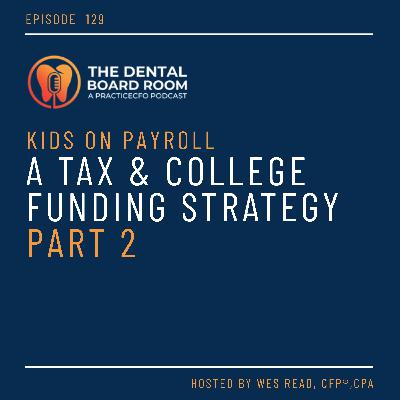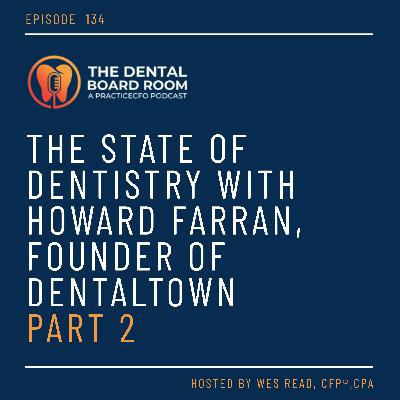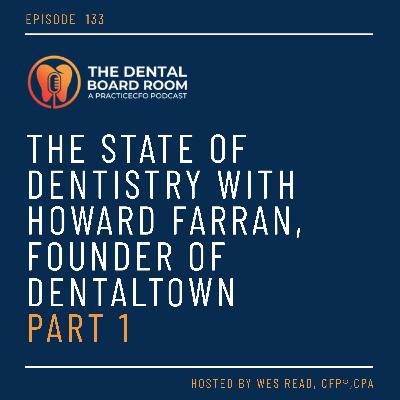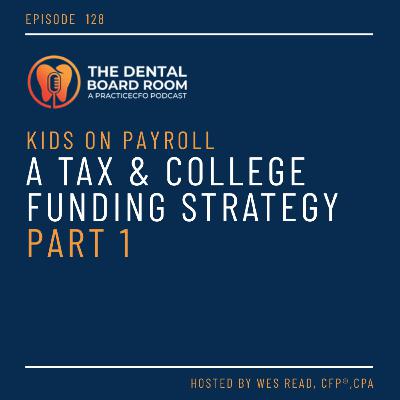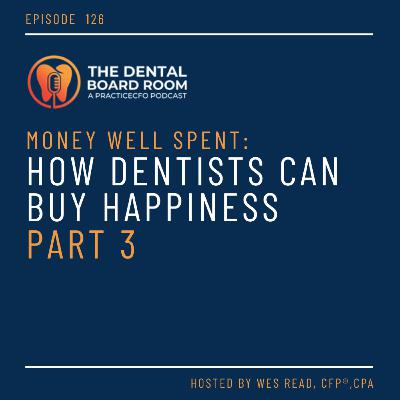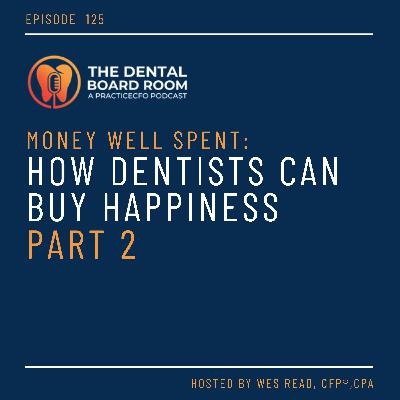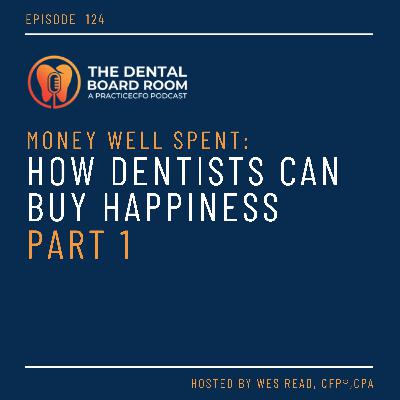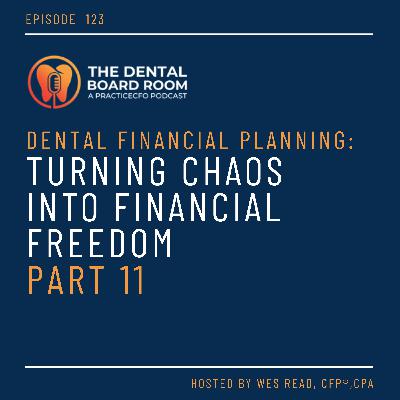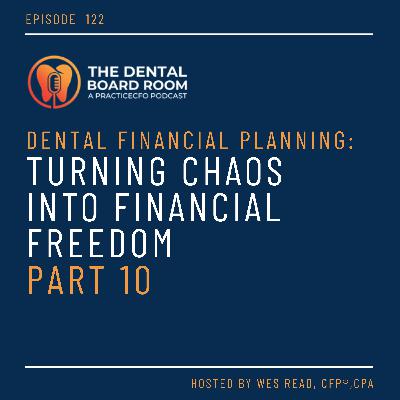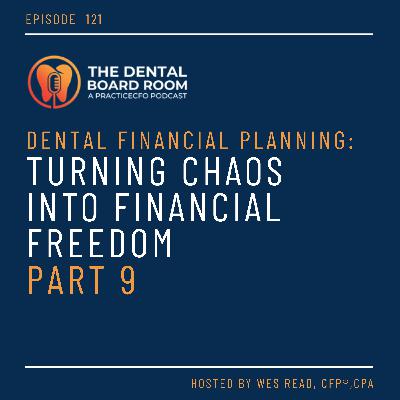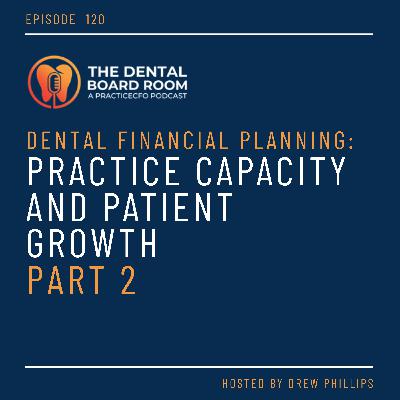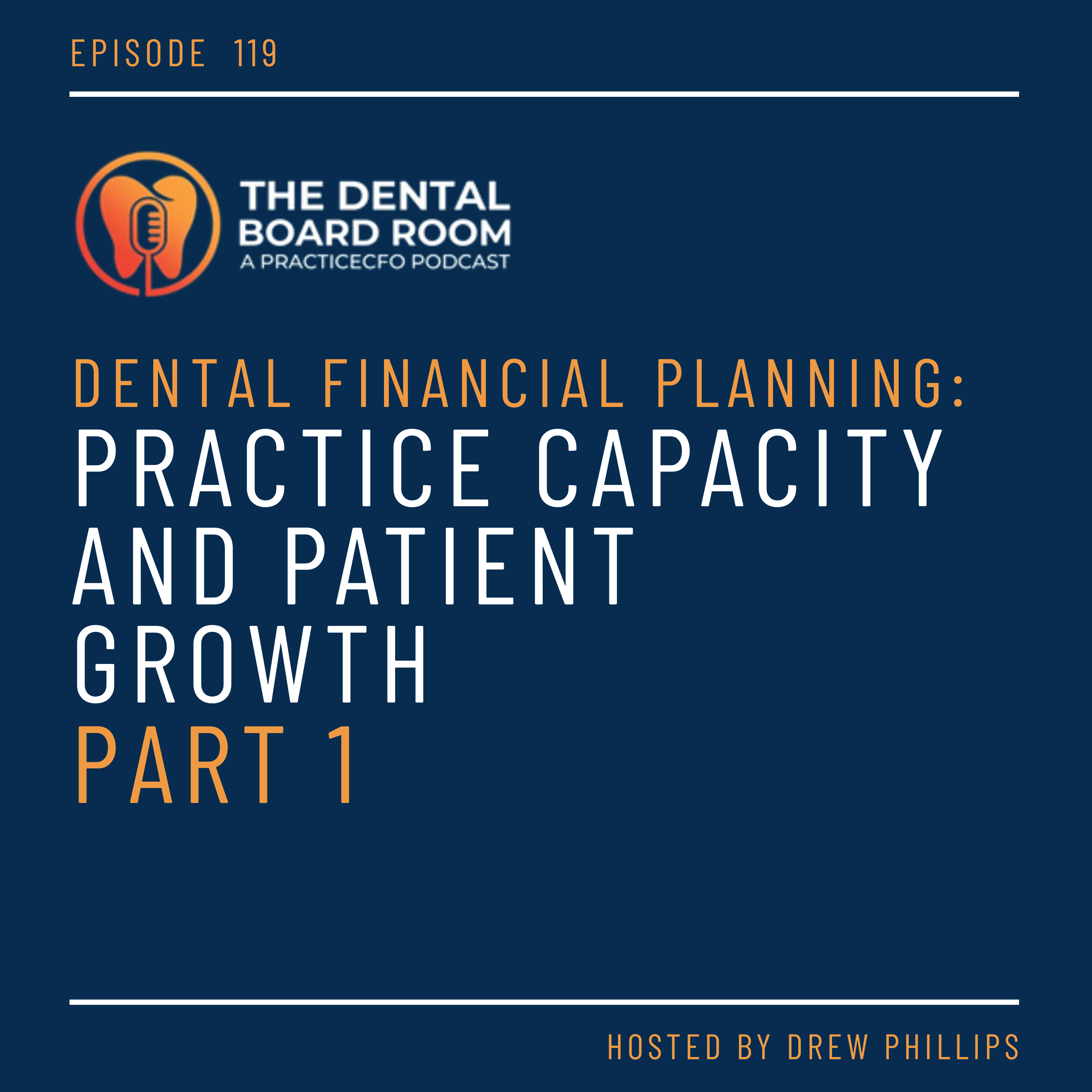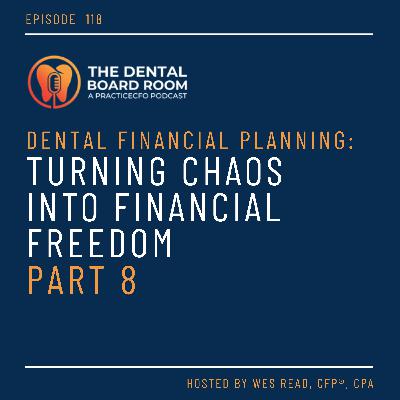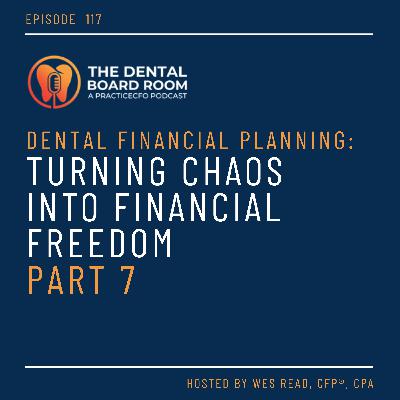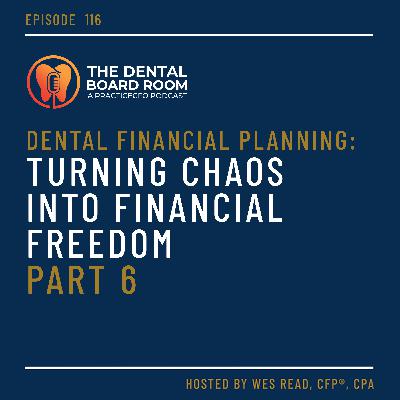129: Kids on Payroll – A Tax & College Funding Strategy Part 2
Description
In this episode of the Dental Boardroom Podcast, host Wes Read, CPA and financial advisor at Practice CFO, continues the discussion on putting your kids on payroll as a smart tax and wealth-building strategy. This time, he dives deeper into how to maximize the benefits by pairing payroll with 529 education savings accounts and Roth IRAs.
Key Takeaways:
Shifting income for tax savings:
- Move income from a higher parent tax bracket to your child’s 0% bracket (standard deduction in 2025 is $15,750).
- Saves roughly $3,000–$4,000 per child per year. Over many years, that adds up significantly.
Practical execution:
- Children can start as early as age 6–7 and continue through college years.
- Create job descriptions and light documentation (e.g., photos, office work, modeling fees) to substantiate employment.
- Use a modern payroll service (Wes recommends Rippling) to simplify compliance.
How to use the payroll funds:
- Deposit paychecks into the parent’s checking account (simpler than setting up child accounts).
Direct those funds toward:
- A custodial Roth IRA (tax-free growth).
- A 529 education savings account (tax-free growth + tax-free qualified withdrawals).
529 Education Plans explained:
- State-administered plans with varying benefits Utah’s “My529” (Vanguard, low-cost index funds) is Wes’ favorite.
Benefits:
- Tax-free growth and withdrawals for education.
- Potential state tax deductions in some states.
- High contribution limits.
- Parent-owned accounts are more favorable for financial aid and offer flexibility to transfer funds among siblings.
- Can cover not just college, but also K–12, trade schools, apprenticeships, and up to $10K in student loan repayment.
Suggested split strategy:
- After payroll and FICA taxes, about $14K remains per child.
- Example: Fund $7K to a Roth IRA + $7K to a 529 plan, balancing retirement savings with education funding.
Risk & compliance notes:
- Wes has never seen an IRS audit on this strategy in 17+ years, but stresses proper documentation.
- Pay a fair wage aligned with actual work performed.
- Always consult your CPA if unsure.
Big picture:
- This is more than just tax savings it’s wealth building.
- Combining small strategies like payroll, home office, auto deductions, and retirement plans can collectively cut taxes by 30–60% (or more) and accelerate financial independence.
Why This Matters:
By intentionally leveraging tax rules, you can redirect money that would have gone to the IRS into your kids’ education, retirement, or family wealth. Over time, these small wins compound into major financial independence.

